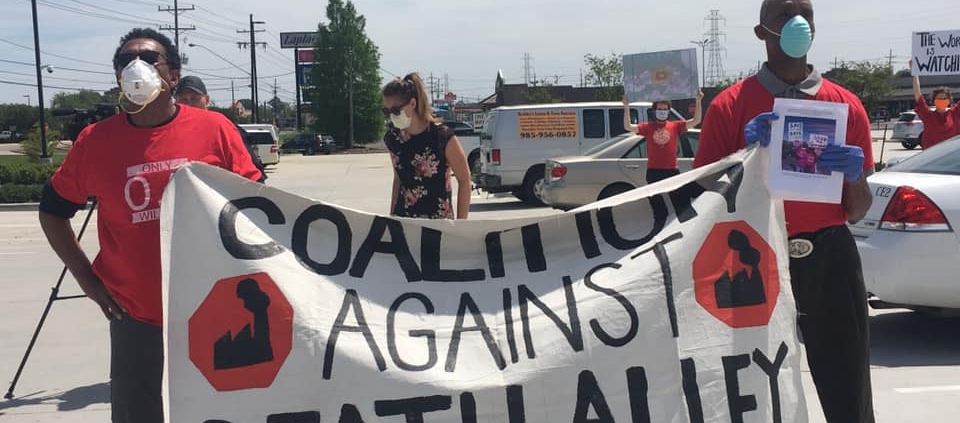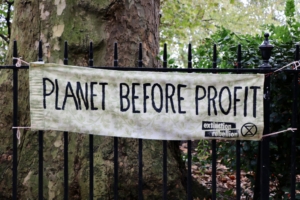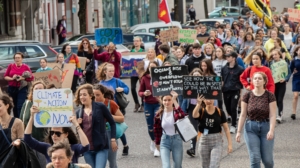Trends in Energy: Mid-Year Update Part 1
At the start of 2020, Delve analysts identified six trends in energy infrastructure to watch over the year. While 2020 has brought unexpected challenges that no one anticipated, as we look back at those key trends six months later, it is clear that although some of these trends have accelerated and shifted, the challenges for the industry still ring true in this “new normal.” This month and next, we will explore COVID-19 and its impact on the industry and policy debate across these key trends.
1. The Rise in Nationally-backed but Locally Coordinated Activism in Traditionally Fossil Fuel-friendly Jurisdictions Along the Gulf Coast Against Both Midstream and Downstream Infrastructure Projects Continues Unabated by Pandemic or Other Shifts in Public Debates
At the beginning of the year, based on analysis of 2019 data, it was clear that activism targeting both midstream and downstream infrastructure projects in traditionally fossil-fuel friendly Texas and Louisiana was likely to increase in 2020. Through the first half of the year, that trend has continued unabated by the COVID-19 or other social unrest. Activists dedicated to the cause remain dedicated to the cause, and have found creative ways to continue their efforts against the industry.
In Texas, the Save RGV (Rio Grande Valley) from LNG coalition, which includes local Texan groups as well as national and international organizations such as the Sierra Club, Rainforest Action Network, and even Friends of the Earth France, has continued its efforts against proposed LNG terminals in the state and associated pipeline projects. Last year, Save RGV from LNG wrote a report warning banks and investors of the reputational risks associated with investing in LNG projects in the Rio Grande Valley, and proudly proclaimed that pressure from activists convinced international bank BNP Paribas to divest from Texas LNG. The Sierra Club and other activists also asked the Federal Energy Regulatory Commission (FERC) to reconsider permitting approvals for some of the projects. This year, the Sierra Club joined local groups in filing lawsuits challenging permits issued by FERC. Activists in Texas are also receiving technical support from groups like the Environmental Defense Fund (EDF), which in April released a study with Harvard University, Georgia Tech and the SRON Netherlands Institute that claimed oil and gas operations in the Permian Basin “are releasing methane at twice the average rate found in previous studies of 11 other major U.S. oil and gas regions.”
Subscribe to Receive Insights
"*" indicates required fields
In Louisiana, after failing to stop the Bayou Bridge Pipeline, activists last year shifted their focus to the state’s petrochemical industry, resurrecting the “Cancer Alley” rallying cry of decades past. Now they have seized on the COVID-19 pandemic to get their message out. Following the release of an early study from Harvard University linking air quality and the Coronavirus pandemic, activists in the state modified the “Cancer Alley” moniker to “Coronavirus Alley,” with national groups like the Sierra Club promoting the label. Activists have continued to promote the study, despite concerns raised over the studies lack of a peer review. In April of this year, Congressman Cedric Richmond responded to a letter from the Coalition Against Death Alley, an activist coalition opposing the state’s petrochemical industry, stating he had called on Congress to establish a select committee to investigate disparities linked to COVID-19 health outcomes, and stated he is working on legislation to provide “protection and direct funding for communities around facilities.”
Despite the pandemic causing lockdowns in large parts of the country, on the ground activism against the petrochemical industry the state has not slowed; in many cases activists have simply been more creative about organizing. In April, the Louisiana Bucket Brigade, an organization opposed to the state’s petrochemical industry, hosted a socially distant protest in front of a facility. The organization livestreamed the event on Facebook to supporters who chose not to attend, highlighting these organizations’ ability to blend social media with on-the-ground activism. Activists have also gathered together to hand out facemasks and Mother’s Day lunches accompanied by protest yard signs to raise awareness of their opposition efforts. Similarly, across the country, activists have used in-car protests as a means to shut down traffic and bring attention to their causes. In addition to the continuing on the ground activism taking place, groups like the Sunrise Movement have created activism schools to help students learn how to “take action online and in-person while social distancing.” As the pandemic and societal unrest continues to influence the ongoing conversation in the country, activism is traditionally fossil fuel states continues, and in many cases does so more creatively in order to seize the moment.
2. Energy Activists Continue to Target the Last Mile for Natural Gas, but the Pandemic Has Broadened and Accelerated Activist Pressures on Utilities
In 2019, “keep it in the ground,” and “stop the pipelines” efforts were joined by a new strategy to target end-users of natural gas by pushing for bans or other electrification initiatives at the municipal or state level to address “building emissions.” In July 2019, Berkeley, California became the first city to ban natural gas and started a nationwide trend. Since then, 30 cities in California have committed to going gas-free, and across the county the movement is picking up steam. In New York City, Mayor Bill De Blasio announced in February he would work with the city council to develop legislation prohibiting the use of natural gas and fuel oil in large buildings. Even in fossil fuel-producing states like Colorado have joined the effort. The city of Boulder is providing incentives for building electrification, and has instituted a mandate that new or reconstructed houses larger than 5,000 square feet be net-zero. Boulder’s “Energy manager for climate initiatives” claimed that “in 2020, our goal will be to lower the net-zero requirement to 3,000 square feet.”
Recently Rob Jackson, a professor at Stanford University who leads the Global Carbon Project said that “dozens for sure, likely hundreds” of jurisdictions would pass gas bans and pro-electric legislation this year. These efforts have been coordinated by national environmental organizations like The Rocky Mountain Institute, The Sierra Club, Physicians for Social Responsibility, and Mothers Out Front, who earlier this year published a new study on “health and air quality impacts and solutions” regarding gas stoves. Activists can be expected to connect such indoor air quality claims with concerns over respiratory infectious diseases like Coronavirus, as they are already expressing worry over the increased exposure due to lockdowns.
As the COVID-19 pandemic set off lockdowns across the country, activists have seized on utility shutoffs and public power as another opportunity to further their demands for green energy. Activists have begun to claim energy is a human right and bring scrutiny to bear on how utilities are treating customers impacted by the pandemic and ensuing lockdowns. Groups like the Energy and Policy Institute are maintaining a live tracker of utilities that have and have not suspended disconnects and advocacy groups across the county pushing Congress and state officials for a moratorium on shut-offs for low-income consumers.
While many of these calls have been matched by utilities taking responsible steps to provide forbearance and good will, that may not be sustainable as the economic challenges of the lockdowns continue, and a number of policymakers are listening to the activists. Activists are leveraging their claim of energy as a human right to call for “power for the people,” accelerating an already existing push for municipalizing electric utilities across the country. These municipalization efforts have frequently been led by progressive groups like the Democratic Socialists of America, and almost always, these cries for public power are framed as necessary to attain their aggressive renewable energy goals.
3. While 2020 May Not Be the Climate Change Election Democrats Were Hoping For, the Election Is Pointing a Spotlight at Environmental Justice as the Politics of Climate Change Works Its Way Into the COVID-19 Debate
Just five months ago, it seemed all but certain that the 2020 presidential campaign would dominate the news cycle through the November election. While “energy dominance” has brought positive policy opportunities for the industry, it has also furthered more aggressive opposition. In that vein, Democrats had hoped to make 2020 the climate change election. Though of course a number of other issues have, at least temporarily, refocused former Vice President Joe Biden’s and President Donald Trump’s campaigns, environmental activists and some of Joe Biden’s former primary competitors have continued to apply pressure to the Democratic nominee on environmental issues even as the pandemic took center stage. At a March debate, after taking jabs from Senator Bernie Sanders, Biden muttered “no new fracking” without additional context. The Biden campaign later attempted to walk back the comment, telling reporters after the debate that he was restating his existing policy pledge to block new oil and gas drilling on public lands. Since becoming the presumptive nominee, however, Biden has signaled a willingness to use “unfettered discretion” to reject infrastructure projects, and “hold polluters accountable for the damage they’ve caused.”
While Biden has tried to appear moderate on energy issues to appeal to rust belt voters, those helping him develop his policy positions and prepare for a potential administration do not match that perception. Biden has assembled what one environmental consultant has called the “Climate Dream Team for Democrats,” a Climate Task Force whose co-chairs include U.S. Rep. Alexandria Ocasio-Cortez (D-NY), the sponsor of Green New Deal legislation, and former Secretary of State John Kerry, an architect of the Paris Climate Accord. In addition, Biden added Sunrise Movement co-founder Varshini Prakash to his climate team. The people helping to drive policy in a campaign are often the same people ending up in the Administration, and in any administration, people are policy.
The climate change debate has also found its way into the presidential politics of pubic health in the age of COVID-19. On the Biden campaign website, a page devoted to the candidate’s plans to fight COVID-19 states the need to “fight climate change as a driver of health threats,” with the candidate claiming, “The link between climate change and health security is well-documented and will create a growing threat to Americans. A Biden Administration will recommit the United States to the Paris Agreement on day one and lead an effort to get every major country to ramp up the ambition of their domestic climate targets.”
While climate change may not be the headline wedge issue in the current campaign debate, if COVID-19 subsides in the fall, climate change could return to the forefront. Even if it does not, expect Democrats to weave climate change and related issues – air quality, water quality, and environmental justice – into the campaign discussion around public health and beyond. Industry will need proactive responses to this debate without become partisan.
As trends in energy infrastructure continue to evolve in response to the COVID-19 pandemic, the 2020 election, and other shifts in public debate, activism has shifted. Much of this shift has been led by a next generation, disruptive energy activism, pushing policy and regulatory pressures to the state and local levels and to the financial industry. Next month we will explore how COVID and societal unrest has accelerated and impacted the push to fight energy infrastructure at the local level and how today’s energy activists include a broad range of groups that might not have previously engaged in energy infrastructure fights.



